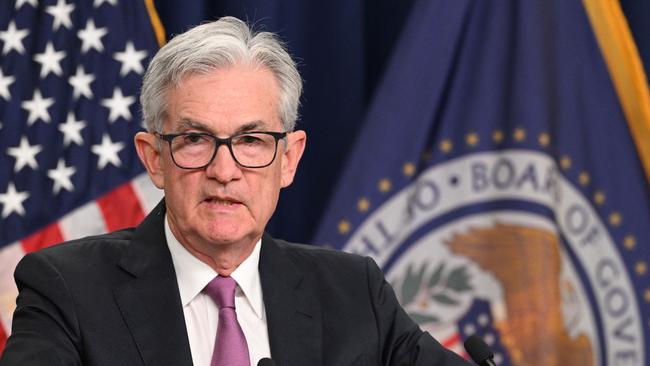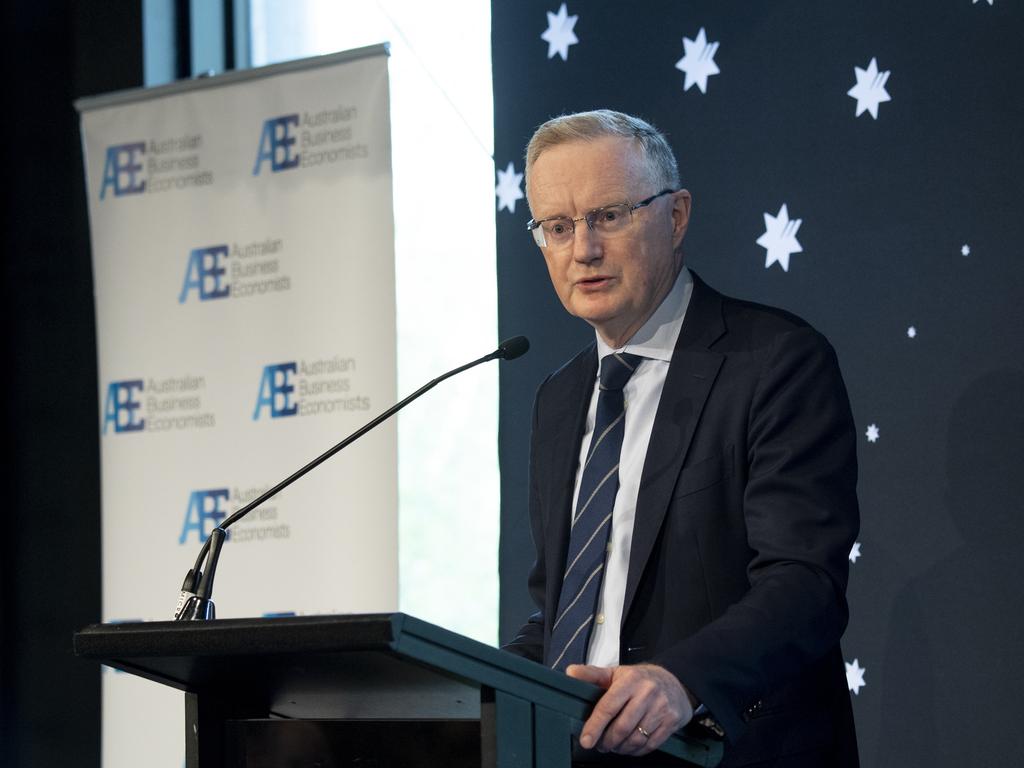Markets see ‘dovish tilt’ by RBA with slower rate rises
Reserve Bank governor Philip Lowe has dialled up his commitment to fight inflation, but has also indicated that the pace of interest rate hikes is likely to slow.
Philip Lowe has delivered a strong defence of “flexible inflation targeting”, while dialling up his commitment to fight inflation, but also indicating that the pace of interest rate hikes is likely to slow.
In what the markets saw as a “dovish tilt”, the Reserve Bank governor said: “The case for a slower pace of increase in interest rates becomes stronger as the level of the cash rate rises.”
The extent and speed of rate hikes would “be guided by the incoming data and the evolving outlook for inflation and the labour market”, Dr Lowe said in his Anika Foundation address in Sydney on Thursday.
The full effects of rapid interest rate rises were “still to be felt” and household budgets were “also under pressure from higher inflation, and housing prices are declining”.
But many households had built up large financial buffers, the household savings rate remained higher than it was before the pandemic, households were benefiting from the stronger labour market, and “recent data continue to suggest resilience in consumer spending”,
The Australian dollar and bond yields slipped, and the sharemarket rose as the market-implied peak of the RBA’s cash rate in mid-2023 fell to about 3.6 per cent from 3.79 per cent after the speech.
The S&P/ASX 200 share index closed up 1.8 per cent at a three-day high of 6848.7 points.
It was the fifth-biggest one-day rise in the sharemarket this year and the sixth biggest in 12 months.
ANZ trimmed its previous call for a 50 basis point rate hike by the RBA in November to 25 basis points, while still expecting a 50 basis point hike in October and 25 basis points in December.
Goldman Sachs continued to expect 50 basis points in October, followed by 25 basis point hikes. Others reiterated their view that the pace of rate hikes will slow to 25 basis points next month.
The RBA governor’s speech on Inflation and the Monetary Policy Framework stopped short of saying, as his US counterpart, Federal Reserve chair Jerome Powell did in his Jackson Hole speech last month, that higher interest rates would “bring some pain” to households and businesses.

However, in the Q&A, he said: “There will be difficult times ahead for some households. We know that.”
While saying that the RBA was “committed to the return of inflation to target”, he repeated his recent line that it was “seeking to do this in a way that keeps the economy on an even keel”, adding that it was “possible to achieve this, but the path here is a narrow one and it is clouded in uncertainty”.
But in a nod to Mr Powell’s speech at the Jackson Hole Economic Policy Symposium, Dr Lowe described inflation as a “scourge” and said the RBA was “committed to doing what is necessary to ensure that inflation returns to target over time”.
“(High inflation) damages our standard of living, creates additional uncertainty for households and businesses, erodes the value of people’s savings and adds to inequality,” he said. Without price stability, it is not possible to achieve a sustained period of low unemployment.
“It is important, therefore, that this current surge in inflation is only temporary and that we once again return to the 2 to 3 per cent range.
“The board is committed to the return of inflation to target.”
Dr Lowe also stressed the importance of controlling inflation psychology.
“If workers and businesses come to expect higher inflation, and wages growth and price-setting behaviour adjusts accordingly, the task of navigating that narrow path will be very difficult, if not impossible,” he said. “A shift higher in inflation expectations will require higher interest rates.
“In time that would mean a sharper slowing of the economy. It is in our national interest that we avoid this.”
He noted that before the pandemic it was “very difficult for a business person to stand in the public square and say they were putting their prices up”, but now they were able to do so.
“The community doesn’t like it, but there is a begrudging acceptance, and with prices rising it is harder to resist bigger wage increases, especially in a tight labour market.”
But inflation expectations in Australia remained consistent with the inflation target.
Wages growth had picked up, but not nearly to the same extent as in the US.
“While there are some areas where wages are rising very quickly in Australia, aggregate growth in wages has not responded materially to the higher inflation and is not inconsistent with inflation returning to target over time,” Dr Lowe said.
“It is important that this remains the case and that we avoid the cycle of higher inflation leading to higher wages growth and then higher inflation – a cycle like that would end in higher interest rates and a sharper slowing in the economy.”
On the “flexible inflation targeting framework” used by the RBA for the past three decades, he noted: “While the inflation rate has varied from year to year, it has always returned to the 2 to 3 per cent range. It has also averaged 2 point something per cent since the early 1990s.
“This formulation has provided the board with the flexibility to pursue price stability in a way that, in its judgment, best contributes to full employment and the general welfare of the Australian people, which are both legislated objectives of the RBA.”
In his view, flexible inflation targeting had “served Australia well and remains the best monetary policy regime for Australia”.
“It is certainly worth examining alternatives as part of the current review of the RBA, but I do not see a strong case for a move away from this broad approach,” Dr Lowe said.
“Flexible inflation targeting is not a perfect monetary policy regime, but it is hard to do better.”
At Jackson Hole, Mr Powell also said “another unusually large increase could be appropriate” in September.
The updated Fed dot-plot next month is likely to see the median estimate of the Fed funds rate for year-end increased to 3.7 per cent from 3.38 per cent, in line with market thinking.






To join the conversation, please log in. Don't have an account? Register
Join the conversation, you are commenting as Logout